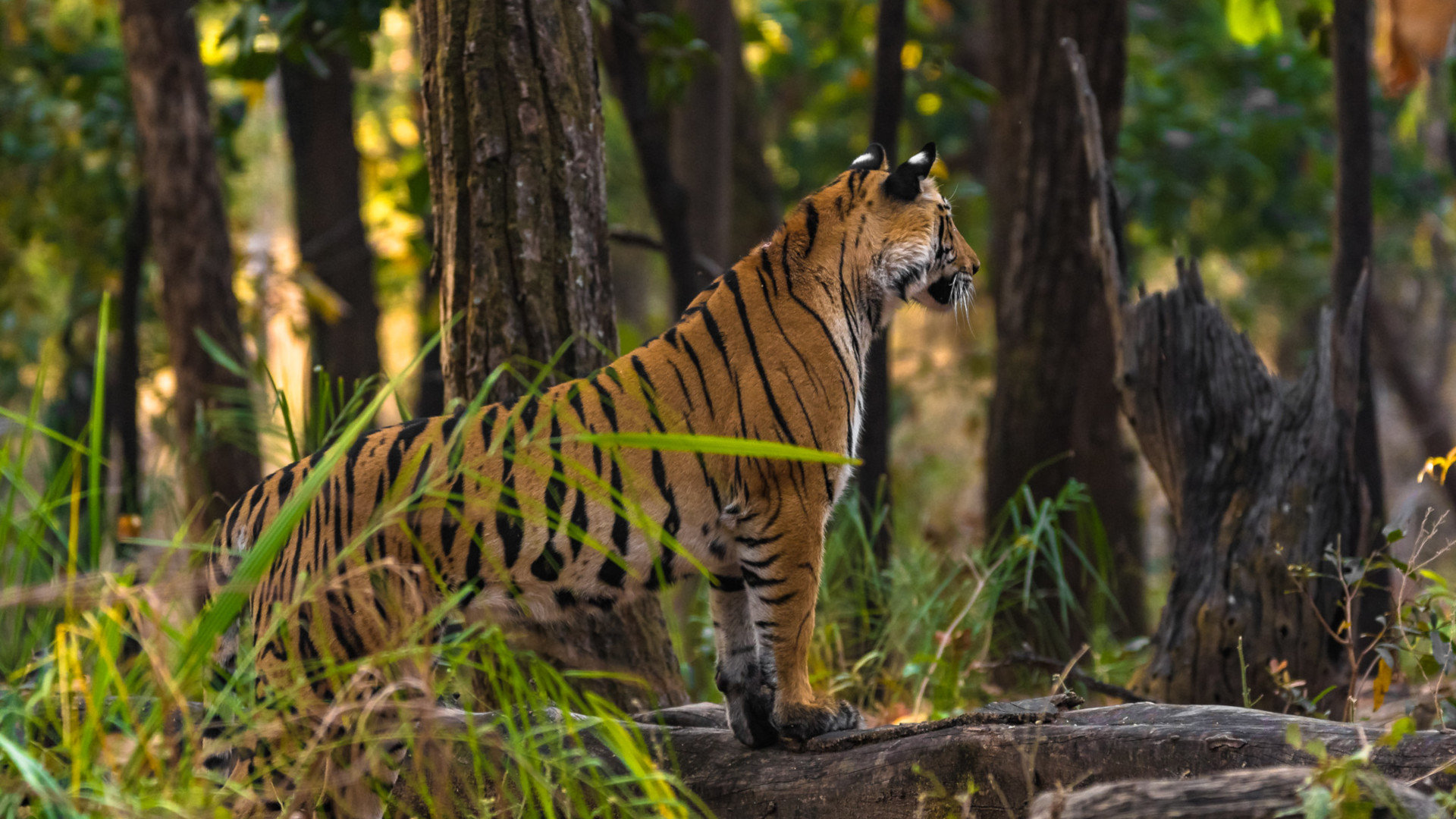India this week announced some amazing news: The country’s wild tiger populations have increased by 30 percent in just the past four years. Buoyed by intense conservation efforts, India is now reportedly home to an estimated 2,967 Bengal tigers (Panthera tigris tigris).
 To put this in context, India’s tiger population was estimated at 2,226 in 2016, when the wild population of all tiger subspecies was placed at 3,890. That was a big increase over 2010’s estimate, which placed the world population at just 3,200 after several years of rampant poaching for the animals’ skins and body parts, which are all too often used in traditional Asian medicine.
To put this in context, India’s tiger population was estimated at 2,226 in 2016, when the wild population of all tiger subspecies was placed at 3,890. That was a big increase over 2010’s estimate, which placed the world population at just 3,200 after several years of rampant poaching for the animals’ skins and body parts, which are all too often used in traditional Asian medicine.
India credited increased monitoring and stricter wildlife policies for the population increase, which puts the country four years head of its goal to double its wild tiger populations.
There are a few caveats to these new numbers, though. First, the country calculated its new tiger population numbers, in part, by collecting and analyzing 350,000 images from 26,000 camera traps distributed across 146,000 square miles of tiger habitat. This method has actually garnered some criticism for its accuracy. India used to estimate its tiger population by counting footprints or “pug marks,” but that method was abandoned after it was proven to count tigers that did not still exist. The new method counts photo images as well as tiger tracks, droppings and other signs of their presence, along with estimates of prey abundance and habitat viability. Some experts suggest this may lead to double-counting of some tigers.
Meanwhile tiger poaching is still a big problem, although it has declined in recent years. More than 400 tigers are believed to have been killed by poachers in India between 2008 and 2018, according to a recent investigation.

And it’s not just poaching. At least 100 tigers died in India last year, many of which were killed by poisoning, electrocution and other direct or indirect conflicts with humans. Nearly half of last year’s tiger deaths in India last year occurred outside protected areas, a sign that the big cats have come into increasing pressure from living next to human populations. Just last week, in a crime that went viral on social media, villagers in northern India beat a tiger to death with large sticks after it fatally mauled a local man.
This indicates that tigers may be losing the space they need to roam — about 75 square miles per cat — and that India’s increasing human population continues to encroach upon wild territories. “Unless we have a sound strategy to tackle these conflicts, tiger lynchings will continue,” conservationist Prerna Singh Bindra told The New York Times. “Forests are being fragmented. We are saying yes to about 98 percent of development and other projects in protected areas. If we keep cutting habitats, this tiger utopia is going to come crashing down.”
Finally there’s a question of the genetic health of these tigers. India has long had the world’s biggest remaining tiger population, so the cats in the country are undoubtedly genetically stronger than others, such as Siberian or Amur tigers (Panthera tigris altaica), which face a genetic bottleneck and are at risk of inbreeding.
But India’s Bengal tigers still face some genetic challenges. Research published July 10 in the journal Global Ecology and Conservation found that some populations have poor genetic exchange with neighboring groups as a result of habitat fragmentation. The authors suggest it’s important to manage India’s tigers not on the reserve-by-reserve basis but on a national metapopulation level to ensure all of the country’s tigers maintain their genetic strength. The study also identified several smaller populations that “currently have low tiger numbers, yet harbor unique diversity that is currently under-represented and not prioritized for conservation investments.”
Despite these caveats India’s increasing tiger population is a desperately needed conservation success for these embattled animals. India still has some problems to solve, but more tigers living in the wild is always good news. Now other countries need to follow India’s lead and work on boosting their own tiger populations while there’s still time left to save them.


